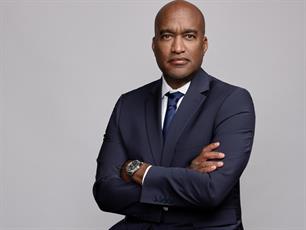Alisha Marks Tischler 10 May 2015 // 5:52PM GMT
As PR professionals, we all know the power of social media and the impact that negative online reviews can have. While social media can be an incredibly valuable tool for generating awareness and exposure, at times it may feel more like a necessary evil we must endure for the sake of transparency and real-time engagement.
But for Windemere Cay apartment complex in Florida, this lack of control seemed too much to bear—and as a result, decided to incorporate a Social Media Addendum into their lease contracts, imposing a $10,000 fine for residents caught writing a bad review.
One would have to assume they ran this clause past their legal team, but from a PR standpoint, an act like this seems inconceivable. That’s because while the apartment complex may have had the legal authority to institute such a clause, by managing to subvert a couple of negative reviews they in turn captured the ire of national media attention, with coverage blasting their behavior in press ranging from the Huffington Post and CBS News to the Orlando Sentinel and beyond.
While a legal recommendation might hold up in court, it won’t necessarily hold up in the court of public opinion, which is why PR professionals and legal counsel are at their best when working together. A unified legal and PR strategy not only ensures that what is said or done is legally permissible, but also presents a likable corporate brand image.
For the past decade, we have worked with a number of law firms and in-house legal counsel, ranging from crisis management issues to litigation support. Here are some of the most critical lessons we’ve learned along the way.
Having a Seat at the Table
The legal team is generally involved in important decisions by default, but as PR professionals, we can also act as a crucial sounding board in the decision-making process. Too often we’re engaged at the 11th hour, cleaning up the mess rather than preventing or at least mitigating it in the first place. But by having a seat at the table from the very beginning, public relations can play a valuable role in shaping strategy as opposed to simply reacting to it.
Prepare for the Worst Case Scenario
Crisis communications and issues management involves planning for the worst and best case scenarios with appropriate contingency plans in place. This is exactly what your company or client’s legal team is doing as well. Yet so often the two operate in a vacuum with no knowledge of the other’s existence or the implications they can bring. But by working together, PR and legal can not only ensure alignment, but also help augment or support each other in achieving the broader business objectives. For example, a company about to undergo a wave of layoffs can protect itself against potential wrongful dismissal claims while also preserving its reputation in the public domain.
Begin with What You Want to Say
PR professionals love to make bold statements. After all, we think and speak in headlines. But sometimes, what we want to say can create potential liabilities for our clients. At the same time, if you have ever run your statement passed legal, you have likely found the redline version filled with ambiguity and jargon. If you start with what you want to say and work back from there, often you can find a happy medium that protects against liability without diluting your message.
Counsel on Legal Actions with Viral Potential
We all know in PR that one wrong move can yield unwanted media coverage with the potential to go viral. But this point is often overlooked by legal, which is instead focused on legal procedure and protocol. This was the case when Starbucks sent a cease-and-desist letter to a small Missouri brewer for naming one of its beers the “Frappucino” (similar in likeness to Starbuck’s ‘Frappuccino’).
The coffee company’s attempt to protect its trademark backfired when the small brewer shared the letter with local media. From there, the news spread like wildfire to national press and on social media, putting Starbucks on the defensive and positioning it as an aggressive bully. Protecting a brand’s trademark is important, but sometimes it’s better to cut losses legally to preserve a company’s brand image over the long-haul.
Review Public Facing Documents
Many legal documents today are deemed public or have the potential to become public, which is why it’s critical that both the lawyers and PR counsel review any major legal documents. From contracts or complaints to deed recordings and court filings, these should all be treated as public-facing documents that could get in the hands of the press. A simple review can help best package it for public consumption and preempt against any potential negative exposure.
Alisha Marks Tischler is Vice President of Schwartz Media Strategies, a Miami-based boutique agency driving multilingual campaigns across industry sectors including banking, real estate, hospitality and tourism, lifestyle, professional services, and public affairs.


































.jpg)





.tmb-135x100.jpg)











